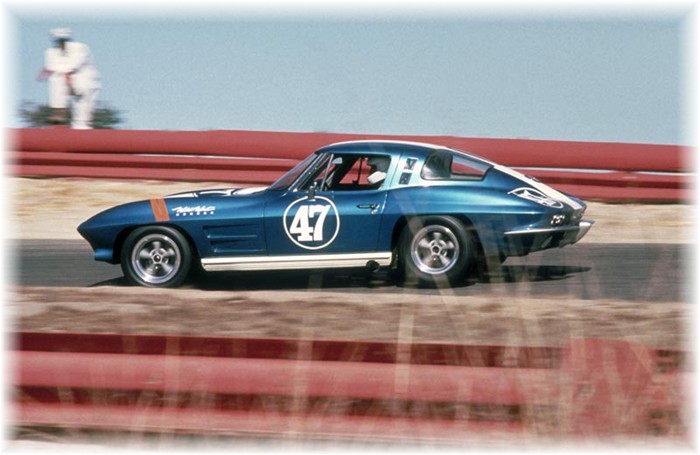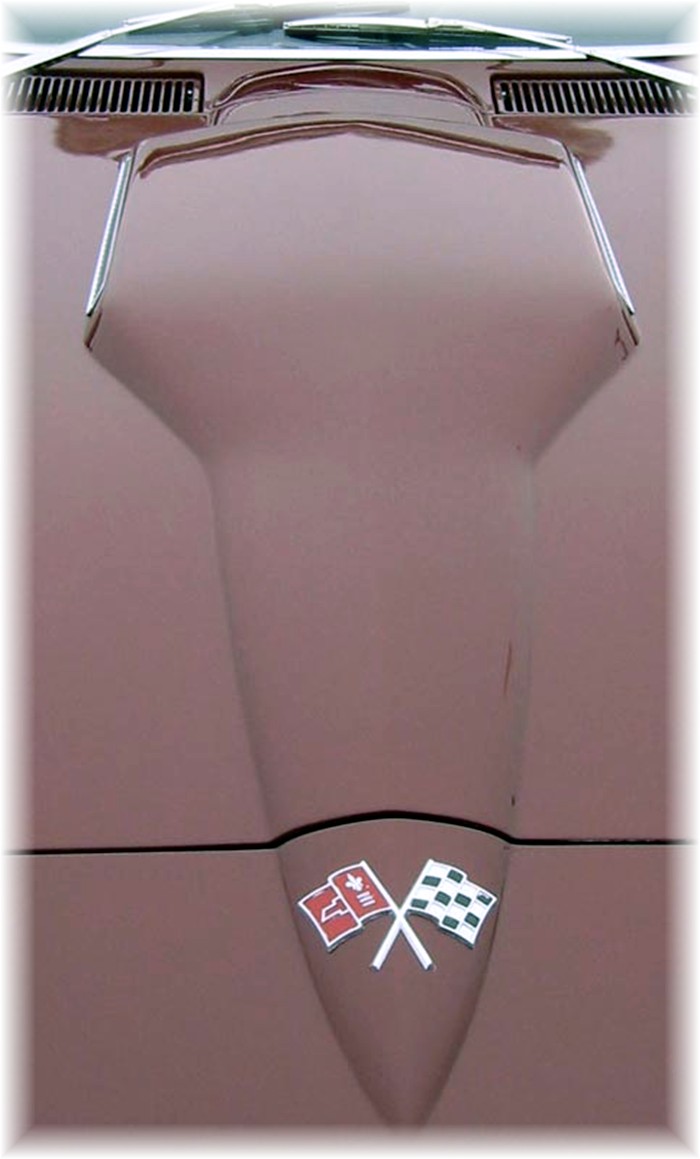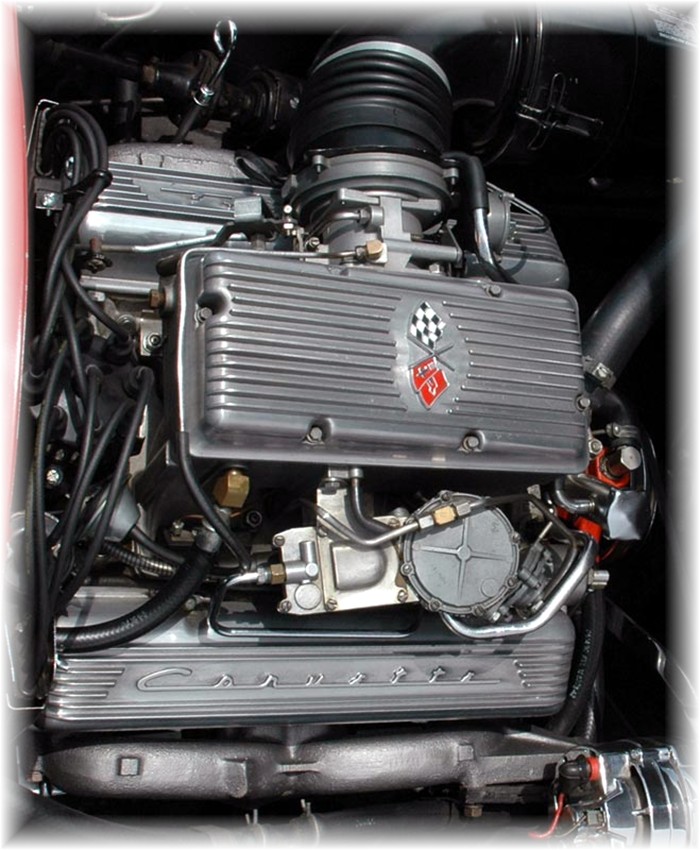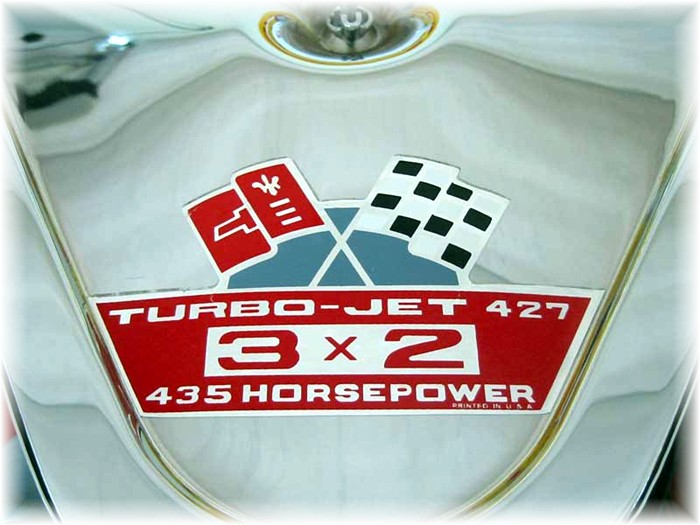For the 1963 model year, Corvette chief engineer Zora Akus-Duntov could point to the first production Corvette that was clearly his.

No longer a re-hash of the first generation (or 'C1') Corvettes, the '63 model, though possessed of a fair number of off-the-shelf parts, was clean sheet design that was smaller than the preceding 1962 Corvette, on a shorter wheelbase, with ideal near 50/50 weight distribution. It also featured a version of the independent rear suspension Duntov had designed for the CERV prototype.


The styling of the 1963 'Vettes had been suggested in the Mako Shark show car (left), and the Stingray race car (right).

New for '63 was a coupe model, featuring the split rear window, over which Zora fought with GM styling. He lost that battle, but only for one year.

1963 saw the introduction of the Z06 option, as well, many of which were raced.


Stronger still were the Grand Sport Corvettes, raced by drivers including Bob Bondurant


Pinifarina took a stab at a more refined, Italianate Corvette, the Rondine.
In 1964, the Corvette's styling was tidied up a bit. The rear window split was gone, as were the non-functional grilles on the hood.


The vent behind the drivers door became functional in '64. Ventilation through the tiny vent was aided by a small fan to pull air out. It was not very effective, and the vents would disappear by '66.

The Grand Sports continued to compete heavily. Here is Roger Penske's 1964 Corvette Grand Sport.

GM showed this modified coupe at the 1964 New York Worlds Fair.

A GM marketing-supplied photo of the '64 coupe.
1965 was a year of firsts and lasts for the Corvette.

The non-functional extractors behind the front wheels were replaced with functional 'gills', hearkening back to the Mako Shark show car.

Under the hood, the big block engine was the news. Though the heavier big block threw off the weight distribution, this was a popular option.

'65 saw the introduction of the racy looking side exhaust option. 4-wheel disk brakes became standard, though buyers could delete them in exchange for the older drum-brake setup, for a modest savings of $64.50

With the introduction of the big block, the high cost, fussy maintenance and modest (by comparison) horsepower gains afforded by the fuel injection option signaled the last year of this option. Fuel injection would not return to the Corvette until the 1982 model.

GM Marketing produced this dramatic picture of a '65 Roadster, with big-block and side pipes.

Chevy was already looking toward the next-generation Corvette, which would look substantially like this 1965 Mako Shark II show car.

GM Marketing photo of the 1966 'Vette roadster


The big news for 66 was the bored and stroked version of the previous 396, now displacing 427 cubic inches, and conservatively rated at 425 hp (gross) in L72 form.

Still a comparative bargain, as evidenced by the bottom line of this window sticker for a '66 roadster with the 427 HP big block.
The 1967 C2 Corvette was never supposed to look like this. The Mako Shark II-inspired third generation Corvette was supposed to debut in '67, but was delayed as some further sorting of some of its new features were in order.


Aesthetically, the bubble hood that signified the presence of the big block in previous years was replaced by this attractive hood, often painted a different color than the rest of the car.

In 1967, the ergonomics were finally about right, with the movement of the emergency brake lever to the center of the cockpit. Alas, this attractive interior would be scuttled for the silly-looking, show car-inspired '68 model's narrower cockpit with deeply tunneled gauges.

1967 coupe

Air cleaner housing broadcasts the big power below.

The knock-off spinners were gone in '67, a nod to new safety regulations which would, along with emissions rules, begin chipping away at this car's awesome performance.

And the 1967 Corvette races off, making way for the next generation, which would last (seemingly) forever.